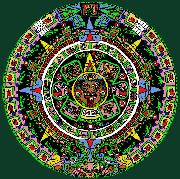THE
ROLLERCOASTER RIDE OF MEXICAN POLITICS
by
Bob Brooke
Continued...
Government talks with the
EZLN to end the armed uprising brought both groups together to sign the
Agreement of San Andreas Larraonzar, although the partial accords that
were reached haven’t been implemented. Following the massacre of 45
indigenous people in Acteal, Chiapas in December 1997, tensions in the
state increased and pressures for a negotiated settlement were renewed.
Draft legislation to change the Mexican Constitution's provisions on
indigenous rights has been introduced in the Mexican Congress.
Mexican Politics Today
A flurry of public scandals followed in 1995 regarding supposed
attempts at obstruction of justice and allegations of major corruption
in police, judicial, military, and other authorities, as well as big
business, including allegations of ties to narcotics trafficking. The
atmosphere of scandal around former President Carlos Salinas has turned
him into something of an arch-villain in the popular mind.
A new group of uncertain
origin and size, the Popular Revolutionary Army (EPR), made its
appearance in southern Mexico on June 28, 1996. The government considers
the EPR a terrorist organization and has vowed to bring the group to
justice. After a period of inactivity following mid-term elections in
July 1997, the EPR has, in the summer of 1998, again begun engaging in
small-scale actions in the southern state of Guerrero.
Vicente Fox Quesada,
PAN’s presidential candidate, and the current president of Mexico, is
a 58-year-old entrepreneur who worked for the Coca-Cola Company and was
a federal deputy and governor of his native state of Guanajuato, in the
heartland of Mexico.
In addition to the two
major political parties, Mexico also has the Party of the Democratic
Revolution (PRD), Mexican Green Ecologist Party (PVEM), and the Social
Democratic Party (PDS). In addition, the country has some very
influential pressure groups, including the Roman Catholic Church,
Confederation of Mexican Workers (CTM), Confederation of Industrial
Chambers (CONCAMIN), Confederation of National Chambers of Commerce (CONCANACO),
National Peasant Confederation (CNC), Revolutionary Confederation of
Workers and Peasants (CROC), Regional Confederation of Mexican Workers (CROM),
Confederation of Employers of the Mexican Republic (COPARMEX), and the
National Chamber of Transformation Industries (CANACINTRA).
All of these political
parties and groups in their own way have helped to shape the politics of
Mexico’s relatively recent past and will continue to do so into the
future.
To read more articles by
Bob Brooke, please visit his Web
site.
<-previous
page 1
2 |

